![]()
![]()
![]()
Use LEFT and RIGHT arrow keys to navigate between flashcards;
Use UP and DOWN arrow keys to flip the card;
H to show hint;
A reads text to speech;
20 Cards in this Set
- Front
- Back
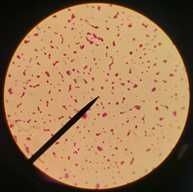
|
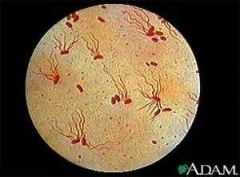
Salmonella typhosa Shape/Arrangementsvd: rod-shaped Gram Reaction: Gram-negative Endospore: no Capsule: Yes Flagellation: Peritrichous - numerous Oxygen requirement: facultative anaerobes Environment: found in the soil, on plants, and d in dd.human or animal feces Use/Disease: can cause typhoid fever, food poisoning Lactic Acid Bacteria (LAB)/ lactics: No |
|
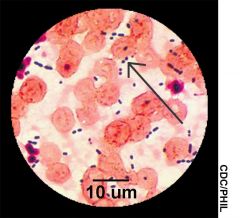
|
Diplococcus pneumoniae Shape/Arrangement: lancet-shaped cocci (elongated cocci with a slightly pointed outer curvature) Gram Reaction: Gram-positive Endospore: do not form spore Capsule: Yes Flagellation: n/a (nonmotile) Oxygen requirement: fermentative aerotolerant anaerobe Environment: Respiratory organs of organismsUse/Disease: can cause pneumonia in mice and humans Lactic Acid Bacteria (LAB)/ lactics: Yes |
|
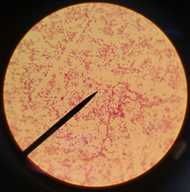
|
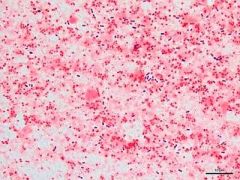
Neisseria catarrhalis Shape/Arrangement: Kidney-shaped diplococcus Gram Reaction: Gram-negative Endospore: No Capsule:Yes Flagellation: n/a (nonmotile) Oxygen requirement: aerobic Environment: Upper and lower respiratory tract. Optimal growth temperature of 35C-37C Use/Disease: Third most common bacterial agent in pediatric acute otitis media and maxillary sinusitis Lactic Acid Bacteria (LAB)/ lactics: No
|
|
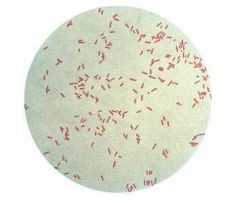
|
Pseudomonas aeruginosa Shape/Arrangement: rod-shaped Gram Reaction: Gram-negative Endospore: No Capsule: Yes Flagellation: Monotrichous - single Oxygen requirement: facultative anaerobe Environment: found in soil, skin flora, and manmade environments; thrives in normal and low-oxygen atmospheres Use/Disease: the most common cause of infections of burn injuries and of the outer ear Lactic Acid Bacteria (LAB)/ lactics: No |
|
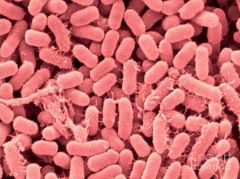
|
Serratia marcescens Shape/Arrangement: rod-shaped Gram Reaction: Gram-negative Endospore: No Capsule: No Flagellation: Peritrichous - numerous Oxygen requirement: Facultative anaerobe Environment: Soil, water, and sometimes on starchy foods such as bread Use/Disease: Causes nosocomial septicemia, urinary tract and wound infections, and pneumonia Lactic Acid Bacteria (LAB)/ lactics: No |
|
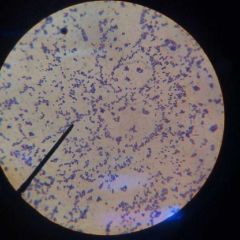
|
Shape/Arrangement: Cuboidal cocci Gram Reaction: Gram-positive Endospore: No Capsule: No Flagellation: N/A (non-motile) Oxygen requirement: Obligate aerobes Environment: Soil, mud, contents of diseased human stomach, rabbit and guinea pig stomach contents, elephant dung, human feces, and the surface of cereal seeds Use/Disease: Can retard the flow of food in intestine resulting to diseased stomach and colons Lactic Acid Bacteria (LAB)/ lactics: No |
|
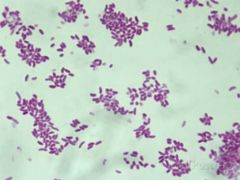
|
Vibrio cholerae Shape/Arrangement: Bacillus (curved-rod or comma-shaped)/ Singles Gram Reaction: Gram-negative Endospore: None Capsule: Yes Flagellation: Monotrichous Oxygen requirement: Facultative anaerobe Environment: Found in both marine and freshwater; endemic in areas with poor sanitation Use/Disease: Cholera disease Lactic Acid Bacteria (LAB)/ lactics: no |
|
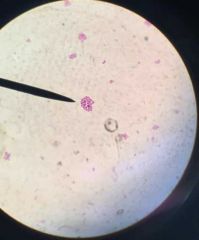
|
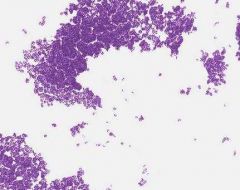
Corynebacterium glutamicum Shape/Arrangement: Bacillus (irregular rod shaped)/ Singles, V-formation Gram Reaction: Gram- positive Endospore: None Capsule: Yes Flagellation: None Oxygen requirement: Facultative anaerobe Environment: Found in soil, animal feces, fruits, and vegetables Use/Disease: Production of monosodium glutamate (MSG), biogene amino acids, nucleotides, and vitamins/ non-pathogenic Lactic Acid Bacteria (LAB)/ lactics: no |
|
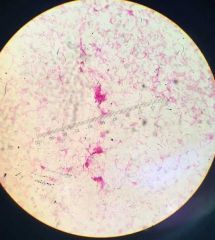
|

Spirillum Shape/Arrangement: spiral Gram Reaction: gram negative Endospore: None Capsule: yes Flagellation: amphitrichous Oxygen requirement: microaerophilic Environment: free-living aquatic forms; inside the bloodstream of animals Use/Disease: rat-bite feverLactic Acid Bacteria (LAB)/ lactics: no |
|
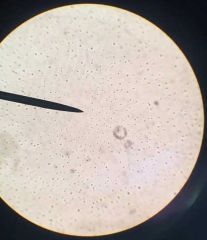
|
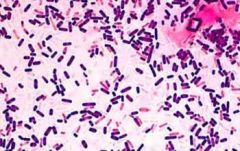
Clostridium perfringens Shape/Arrangement: rod-shaped Gram Reaction: Gram positive Endospore: Yes Capsule: Yes Flagellation: peritrichous Oxygen requirement: obligate anaerobic Environment: common in soil, decaying matter; can be found in intestinal tracts of humans and animals (parasitic) Use/Disease: Gas gangrene Lactic Acid Bacteria (LAB)/ lactics: no |
|
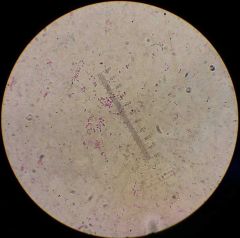
|

Eschirichia coli Shape/Arrangement: rod-shaped Gram Reaction: Gram-negative Endospore: no Capsule: yes Flagellation: Has 10 flagella grouped in peritrical arrangement Oxygen requirement: Facultative anaerobe Environment: commonly found in the lower intestines of warm-blooded organisms; may also be found in the edge of hot springs Use/Disease: produces enzymes that are capable of digesting molecules that are indigestible to vertebrates, produce small amounts of vitamins for absorption into the blood, and help to prevent colonization by toxic bacteria, also assists with waste processing, vitamin K production, and food absorption; they are opportunistic and some of the strains can be serious causal agents of various illness such as diarrhea and hemolytic syndrome. |
|
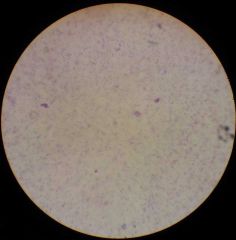
|

Staphylococcus aureus Shape/Arrangement: round-shaped Gram Reaction: Gram-positive Endospore: no Capsule: yes Flagellation: none or lacks flagellum Oxygen requirement: Facultative anaerobeEnvironment: commonly found on the skin and hair as well as noses and throats of animals and humans. They are present in up to 25% of healthy people and are even more common among those with nose, throat, eye and skin infection. Use/Disease: it can cause food poisoning when a food handler contaminates food and then the food is not properly refrigerated. They are the major causes of nosocomial and community-acquired infections, including bacteremia, metastatic abscesses, septic arthritis, endocarditis, osteomyelitis, and wound infections. Lactic Acid Bacteria (LAB)/ lactics: no |
|
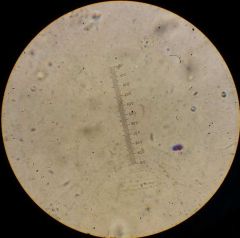
|

Streptococcus pyogenes Shape/Arrangement: cocci or rod shaped bacteria (usu. occurs as long chains of cocci and occasionally in pair) Gram Reaction: Gram-positive Endospore: no Capsule: yes Flagellation: none/lacks flagellum Oxygen requirement: Facultative anaerobes Environment: They can be found on the skin or in the respiratory tract Use/Disease: It causes numerous infections including pharyngitis, tonsillitis, scarlet fever, cellulitis, erysipelas, rheumatic fever, post-streptococcal glomerulonephritis, necrotizing fasciitis, myonecrosis and lymphangitis. |
|
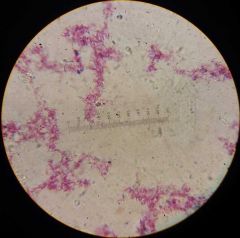
|
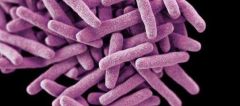
Mycobacterium tuberculosis Shape/Arrangement: rod-shaped bacterium Gram Reaction: neither gram-negative nor gram-positive Endospore: no Capsule: yes Flagellation: none Oxygen requirement: Obligate aerobe Environment: Bacteria found in dry and oily areas Use/Disease: Tuberculosis (an infectious disease that affects the lungs causing chronic cough, severe fever, and may cause death)Lactic Acid Bacteria (LAB)/ lactics: no |
|
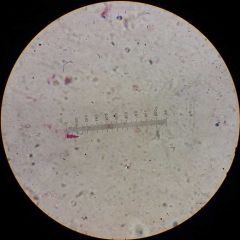
|
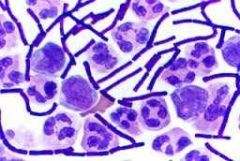
Lactobacillus bulgaricus Shape/Arrangement: rod-shaped bacterium Gram Reaction: Gram-positive Endospore: none Capsule: yes Flagellation: none Oxygen requirement: Facultative aerobic Environment: Strains of L. bulgaricus are isolated from naturally fermented products and are grown in milk Use/Disease: used in yogurt and probiotic production Lactic Acid Bacteria (LAB)/ lactics: part of the lactic acid bacteria group that converts sugar into lactic acid |
|
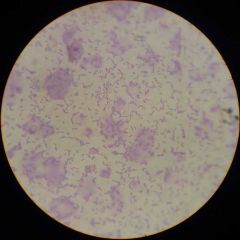
|
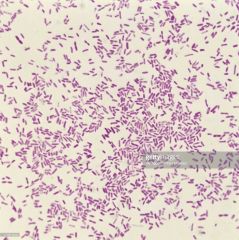
Shigella dysenteriae Shape/Arrangement: rod-shaped bacterium Gram Reaction: Gram negative Endospore: none Capsule: none Flagellation: none Oxygen requirement:Facultative anaerobic Environment: The S. dysenteriae is found in stools of infected individuals and contaminated water and food supplies Use/Disease: causes the most severe dysentery (a gastroenteritis resulting in diarrhea with blood) because of its potent and deadly Shiga toxin Lactic Acid Bacteria (LAB)/ lactics: no |
|
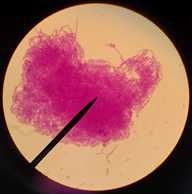
|
Bacillus subtilis Shape/Arrangement: Rod-shaped Gram Reaction: Gram-positive Endospore: Yes Capsule:Yes Flagellation: Peritrichous flagella - numerous Oxygen requirement: Facultative aerobes Environment: Soil and vegetation Use/Disease: Used on plants as a fungicide. Non-pathogenic Lactic Acid Bacteria (LAB)/ lactics: No
|
|
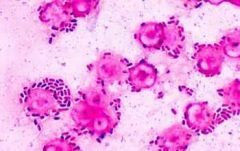
|
Klebsiella pneumoniae Shape/Arrangement: Rod-shaped Gram Reaction: Gram negative Bacteria Endospore: no Capsule: Yes Flagellation: None Oxygen requirement: Facultative Anaerobe Environment: Widely distributed in nature and can be found in water, soil, plants and intestine of animals especially humans Use/Disease: Urinary Tract Infection and Respiratory Tract Infection. Can also cause septicemia, peritonitis, meningitis, wound and burn infection. Lactic Acid Bacteria (LAB)/ lactics: |
|
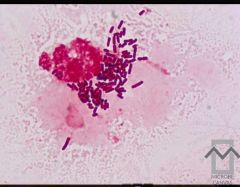
|
Enterobacter aerogenes Shape/Arrangement: Bacillus Gram Reaction: gram-negative Endospore: Capsule: Yes Flagellation: Peritrichous Flagella Oxygen requirement: Facultative Anaerobe Environment: Can be found in soil, water, sewage, food and also on the human skin and in the intestinal tract. Use/Disease: respiratory and urinary tract infections, wound infections, osteomyelitis, meningitis and bacteremia. Lactic Acid Bacteria (LAB)/ lactics: |
|
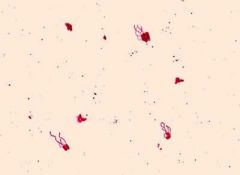
|
Alcaligenes faecalis Shape/Arrangement: Bacillus Gram Reaction: Gram-negative Endospore: Capsule: Yes Flagellation: Peritrichous Flagella Oxygen requirement: Obligate-aerobic Environment: Found in the environment, soil and water. They are also present in a hospital environment, where it is wet, such as; respirators and dialysis systems and can sometimes colonize the skin. Use/Disease: urinary tract infection, bacterial keratitis and postoperative endophthalmitis.Lactic Acid Bacteria (LAB)/ lactics: |

